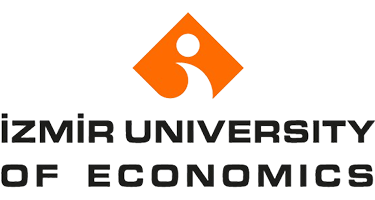BA 573 | Course Introduction and Application Information
| Course Name |
International Financial Reporting and Analysis
|
|
Code
|
Semester
|
Theory
(hour/week) |
Application/Lab
(hour/week) |
Local Credits
|
ECTS
|
|
BA 573
|
Fall/Spring
|
3
|
0
|
3
|
7.5
|
| Prerequisites |
None
|
|||||
| Course Language |
English
|
|||||
| Course Type |
Elective
|
|||||
| Course Level |
Second Cycle
|
|||||
| Mode of Delivery | - | |||||
| Teaching Methods and Techniques of the Course | DiscussionQ&ALecture / Presentation | |||||
| National Occupation Classification | - | |||||
| Course Coordinator | ||||||
| Course Lecturer(s) | ||||||
| Assistant(s) | ||||||
| Course Objectives | The objective of this course is to improve the students’ knowledge of the varying accounting and financial reporting practices. Moreover, the objective of this course is to focus on dynamic business environment, business decisions, strategies and performance. To be able to analyze basic financial statements by using different tools and techniques this course will focus on the key aspects of financial reporting. |
| Learning Outcomes |
The students who succeeded in this course;
|
| Course Description | This course presents the role of Conceptual Framework and key International Financial Reporting Standards in financial analysis and business decisions. |
| Related Sustainable Development Goals |
|
|
|
Core Courses | |
| Major Area Courses | ||
| Supportive Courses | ||
| Media and Management Skills Courses | ||
| Transferable Skill Courses |
WEEKLY SUBJECTS AND RELATED PREPARATION STUDIES
| Week | Subjects | Related Preparation |
| 1 | Overview of Financial Statement Analysis | |
| 2 | Introduction to Financial Reporting - The regulatory framework; | IASB Conceptual Framework |
| 3 | The IASB conceptual framework & IAS 1 Presentation of Financial Statements | IAS 1 and IAS 21 |
| 4 | IAS 1 Presentation of Financial Statements, Intorduction to set of financial statements | IAS 1 and IAS 21 |
| 5 | IAS 7 The statement of Cash flow | IAS 7 |
| 6 | Financial Statement Analysis | |
| 7 | Financial Statement Analysis | |
| 8 | Midterm - IAS 8 Accounting Policies, Changes in Accounting Estimates & Errors, IAS 10 Events after the reporting period | IAS 8 and IAS 10 |
| 9 | IAS 16 Property,Plant & Equipment - IAS 36 Impairment of Assets | IAS 16 and IAS 36 |
| 10 | IAS 2 Inventories | IAS 2 |
| 11 | IAS 18 Revenue | IAS 18 and IFRS 15 |
| 12 | IAS 37 Provisions Contingent Liabilities and Contingent Assets, IAS 10 Events after the Reporting Period | IAS 37 and IAS 10 |
| 13 | IAS 17 Leases | IAS 17 and IFRS 16 |
| 14 | IAS 33 Earnings per Share | IAS 33 |
| 15 | Review of the semester | |
| 16 | Final Exam |
| Course Notes/Textbooks | IFRS - International Financial Reporting Standards (ifrs.org and kgk.gov.tr) |
| Suggested Readings/Materials | Wiley IFRS 2012: interpretation and application of international financial reporting standards / Bruce Mackenzie [at al.], ISBN 978-0-470-92399-3 Interpretation and application of Unternational Financial Reporting Standards, Wiley, PKF International Ltd, ISBN: 978-1-119-69936-1 |
EVALUATION SYSTEM
| Semester Activities | Number | Weigthing |
| Participation | ||
| Laboratory / Application | ||
| Field Work | ||
| Quizzes / Studio Critiques | ||
| Portfolio | ||
| Homework / Assignments | ||
| Presentation / Jury |
1
|
20
|
| Project | ||
| Seminar / Workshop | ||
| Oral Exams | ||
| Midterm |
1
|
40
|
| Final Exam |
1
|
40
|
| Total |
| Weighting of Semester Activities on the Final Grade |
2
|
60
|
| Weighting of End-of-Semester Activities on the Final Grade |
1
|
40
|
| Total |
ECTS / WORKLOAD TABLE
| Semester Activities | Number | Duration (Hours) | Workload |
|---|---|---|---|
| Theoretical Course Hours (Including exam week: 16 x total hours) |
16
|
3
|
48
|
| Laboratory / Application Hours (Including exam week: '.16.' x total hours) |
16
|
0
|
|
| Study Hours Out of Class |
14
|
3
|
42
|
| Field Work |
0
|
||
| Quizzes / Studio Critiques |
0
|
||
| Portfolio |
0
|
||
| Homework / Assignments |
0
|
||
| Presentation / Jury |
1
|
20
|
20
|
| Project |
0
|
||
| Seminar / Workshop |
0
|
||
| Oral Exam |
0
|
||
| Midterms |
1
|
30
|
30
|
| Final Exam |
1
|
40
|
40
|
| Total |
180
|
COURSE LEARNING OUTCOMES AND PROGRAM QUALIFICATIONS RELATIONSHIP
|
#
|
Program Competencies/Outcomes |
* Contribution Level
|
|||||
|
1
|
2
|
3
|
4
|
5
|
|||
| 1 |
To be able to demonstrate general business knowledge and skills. |
-
|
-
|
-
|
-
|
-
|
|
| 2 |
To able to master the state-of-the-art literature in the area of specialization. |
-
|
X
|
-
|
-
|
-
|
|
| 3 |
To be able to evaluate the performance of business organizations through a holistic approach. |
-
|
X
|
-
|
-
|
-
|
|
| 4 |
To be able to effectively communicate scientific ideas and research results to diverse audiences. |
-
|
-
|
-
|
X
|
-
|
|
| 5 |
To be able to deliver creative and innovative solutions to business-related problems. |
-
|
-
|
X
|
-
|
-
|
|
| 6 |
To be able to solve business related problems using analytical and technological tools and techniques. |
-
|
X
|
-
|
-
|
-
|
|
| 7 |
To be able to take a critical perspective in evaluating business knowledge. |
-
|
-
|
-
|
-
|
-
|
|
| 8 |
To be able to exhibit an ethical and socially responsible behavior in conducting research and making business decisions. |
-
|
-
|
-
|
-
|
-
|
|
| 9 |
To be able to carry out a well-designed independent and empirical research. |
-
|
-
|
-
|
-
|
-
|
|
| 10 |
To be able to use a foreign language to follow information about the field of finance and participate in discussions in academic environments. |
-
|
-
|
-
|
-
|
X
|
|
*1 Lowest, 2 Low, 3 Average, 4 High, 5 Highest

NEW GÜZELBAHÇE CAMPUS
DetailsGLOBAL CAREER
As Izmir University of Economics transforms into a world-class university, it also raises successful young people with global competence.
More..CONTRIBUTION TO SCIENCE
Izmir University of Economics produces qualified knowledge and competent technologies.
More..VALUING PEOPLE
Izmir University of Economics sees producing social benefit as its reason for existence.
More..


